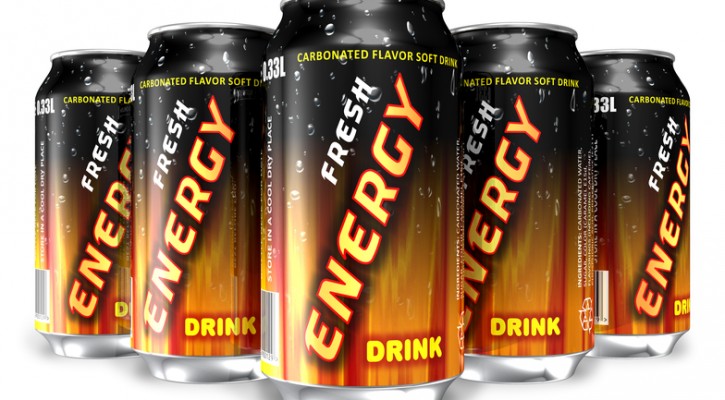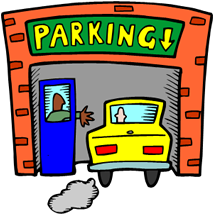Category Archive: Health

Students Who Wouldn’t Drive Drunk Don’t Mind Driving Stoned
May 14, 2014
A recent survey conducted by two Washington State universities and published in JAMA Pediatrics reveals some disturbing information on teens when it comes to driving stoned. While far fewer would drive drunk or ride in a car with a drunk driver, the survey shows that at least 44% of males and 9% of females reported driving after using marijuana and over 51 percent of males and nearly 35 percent of females reported getting in a car with a driver who was high on marijuana. Read more: College Freshmen Drive and Get in Cars with Drivers After Marijuana Use

Energy Drink Related Emergency Room Visits Double
March 9, 2014
According to a report released in January 2013 by the Substance Abuse & Mental Health Services Administration, emergency room visits related to the use of so called energy drinks doubled from 10,068 visits in 2007 to 20,783 visits in 2011.
We were among the first to write about the issue of energy drinks and their effect on health and driving back in 2009 and have published several articles since but the warning bears repeating.
Energy drinks contain large amounts of caffeine and sugar and are marketed mostly toward young people as a way to gain energy, stay awake, or lose weight. Energy drinks are unregulated and there are really no limits on how much caffeine can be added to a drink. Continue Reading

Survivor’s Guilt: Teens in Motor Vehicle Crashes
February 21, 2012
A single car crash in North Carolina last month led to the death of the driver’s twin sister.
Another news report from the past month regarding a teen who had been killed in a single vehicle car crash the teen’s girl friend was quoted as saying:
“Cameron was drinking and we got into a fight. I told him to find another ride home. I said, ‘Get out of this car, you’re being disrespectful,'” Talia said, gasping between tears and raising her arms to the sky. “Why didn’t I drive him home?”
Survivor’s guilt, which is most often associated with victims of combat, can occur in anyone who has survived any type of trauma whether they were directly involved or not. The guilt from wishing they had done something different that may have averted the event can lead to long-lasting psychological problems. The most common form of psychological trauma resulting from survivor’s guilt is Post Traumatic Stress Disorder (PTSD) which can result in life-long, debilitating problems for the victim. This is why high schools, who experience the death of one of their students, make extra counselors available to the student body immediately after the event.
If your teen has been involved in a crash in which someone died or was horribly injured or even if they were weren’t involved but were closely associated with the victim, you will need to help them through the grief process and you should be on the lookout for the warning signs of PTSD.
Grief – The grief process is something everyone who has experienced the loss of a friend or loved one must go through and it occurs in specific stages;
- Denial and Isolation.
- Anger.
- Bargaining.
- Depression.
- Acceptance.
Guiding your teen through all of the stages to acceptance, can be a long and painful process. If the guilt is left unresolved, it can lead to a multitude of psychological issues.
Don’t try to tell your teen how they should act or feel – No one can truly understand how a grieving person feels and trying to tell them their emotions are wrong or unhealthy can only compound the problem. Instead, sympathize and let him or her vent their feelings. Holding in or suppressing one’s feelings can be harmful.
Suggest that they express their grief in a creative way – One example of a creative expression of grief is the Facebook page mentioned in the first article of this newsletter. Writing a song or a poem, creating a memorial to the victim are all positive expressions of grief. Getting involved in programs to prevent future tragedies can give your teen some sense of control over events.
Watch for signs that your teen may be “numbing out” – One common expression of grief is to try to suppress the feelings by turning to alcohol or drugs. This is an especially dangerous form of expression and can only make matters worse.
Withdrawing from friends and events – Your teen my stop engaging in their usual activities or back away from friendships. This part of the denial and isolation stage is designed to prevent any future relationships and thus, the chance of losing someone else that may be close to them. To make up for the lack of relationships, your teen may turn to alcohol or drugs or withdraw into video games. Their school performance may suffer.
Grief Triggers – There will be times when reminders of the loss of their friend will be especially acute; such as anniversaries of the event, birthdays, school proms, graduation. Be aware of these triggers and be prepared to help your teen through the grief process all over again.
Talk, talk, talk, talk, talk – Trying to put the past behind you by ignoring the fact that the event happened won’t make it go away. Talking through the issues is the best form of grief expression. Be there for your teen, allow them to talk it out and listen without judging.
Don’t be afraid to seek professional counseling – Unresolved, PTSD can lead to severe depression, paranoia, isolation, and drug dependence. If left unresolved, these issues can affect future generations. Be on the lookout for warning signs and understand that the issues may be too big for you to handle. Seek professional psychological help.

Carbon Monoxide Poisoning from Vehicle Exhaust – A Vehicle’s Silent Killer
February 9, 2011
A group of young people decide to have a festive “get-together” at a friend’s house. They have been anxiously waiting for the “getty” the entire week. One of the friends is running a bit late to the reunion. His friends have texted him a few times in order to hurry him up so, he can get to the gathering as soon as possible. He finally arrives and parks the car in the garage. However, he mistakenly leaves the car running due to his hurried state. Some time later, a silent killer enters the room; not in the form of a human being and invisible to all. It is odorless, colorless, and lethal. It is called Carbon Monoxide. This toxic gas impairs oxygen delivery and disrupts “oxygen utilization and respiration on a cellular level, especially in high-oxygen demand organs” such as the brain and the heart. Therefore, breathing in high levels of carbon monoxide can cause loss of consciousness and death. Due to this fatal consequence of the carbon monoxide poisoning from the vehicle exhaust, all of the young people at the “get-together” tragically succumb to a heartbreaking death.
The aforementioned tragedy is based on real-life fatalities that occur way too often in our society due to the toxic dangers of carbon monoxide poisoning from vehicle exhaust. Even though not every carbon monoxide poisoning occurrence leads to death, it can still cause long-running symptoms as headaches, dizziness, weakness, nausea, vomiting, chest pain, and an altered mental status. Carbon monoxide can quickly build up to unsafe levels in enclosed or semi-enclosed areas, and that is a key factor why deaths can happen so sudden.
Approximately three-quarters of carbon monoxide emissions in the United States come from motor vehicles (around 56%). Each year, approximately 25 percent of all non-crash fatalities occur from unintentional carbon monoxide poisoning usually involving people inside passenger vehicles that were running inside enclosed spaces, but as previously noted the toxic gas can also spread externally to nearby enclosed or semi-enclosed spaces.
The following are some methods to prevent carbon monoxide poisoning from motor vehicles:
- Always make sure NOT to leave the vehicle engine running when parked in or nearby an enclosed or a semi-enclosed space.
- Never run a vehicle in the garage, even when the garage door is open.
- Have a mechanic check the exhaust system of your motor vehicle every year. A small leak in your car’s exhaust system can lead to a build up of carbon monoxide inside the car.
- Don’t allow people to travel inside truck canopies and campers. Vehicle exhaust can be drawn into the covered or enclosed area of canopies and campers.
- Install a carbon monoxide detector in a motor home or any recreational vehicle.
Carbon monoxide is a silent killer, but nevertheless it is quite imperative for us to not be silent and share with others education on the dangers of carbon monoxide poisoning from vehicle exhaust and on how to prevent it from happening.
Learn more vehicle safety tips at www.NationalSafetyCommission.com

The Effects of Energy Drinks and Driving
December 11, 2009
There are many common misconceptions about energy drinks. Since they are marketed as supplements (and often times sold in health food stores), many people assume they are healthy. Or at the very least they assume energy drinks are not unhealthy. However, energy drinks are more harmful than many people realize. The FDA regulates how much caffeine a company can put in its soft drinks. A 12 ounce soft drink may have no more than 71 mgs of caffeine. However, many energy drink makers have found a way around these restrictions. By marketing their products as supplements, instead of soft drinks they are able to put as much caffeine as they wish into their drinks. Some energy drinks on the market have over double the amount of caffeine the FDA allows in soft drinks.
Ingesting such high amounts of caffeine causes people to go into an altered state, known as caffeine intoxication. Many characteristics of caffeine intoxication are similar to the characteristics of alcohol intoxication. People experiencing caffeine intoxication experience twitching muscles, increased irritability, and slurred speech. Additionally, people who drink energy drinks often become more willing to take risks and are more likely to become distracted. It is a recipe for disaster when a distracted, irritable person who is likely to take risks gets behind the wheel of a car.
When a person uses energy drinks to compensate for missing a good night’s sleep it becomes far more dangerous. Caffeine cannot compensate for the mental and physical alertness that a person gets from a full night of sleep. For a short time caffeine may seemingly do the trick. The effects of the caffeine in energy drinks may help mask a driver’s fatigue for a short while. However, when the effects begin to wear off drivers become increasingly more fatigued and their reaction times and ability to concentrate suffer greatly. Many people describe a crashing effect and they become more acutely aware of their mental and physical fatigue. This feeling is commonly referred to as crashing, which can be likened to the hangover people have the day after a long night of drinking.
Instead of turning to caffeine drinks for artificial energy people preparing to go on a long drive should get a full night of sleep. Additionally, they should take frequent stretch breaks, stay hydrated and take power naps if needed to ensure they are mentally and physically alert on the road.
Read more driver safety tips and dangers related to energy drinks at National Safety Commissions Driver Alerts Blog.
